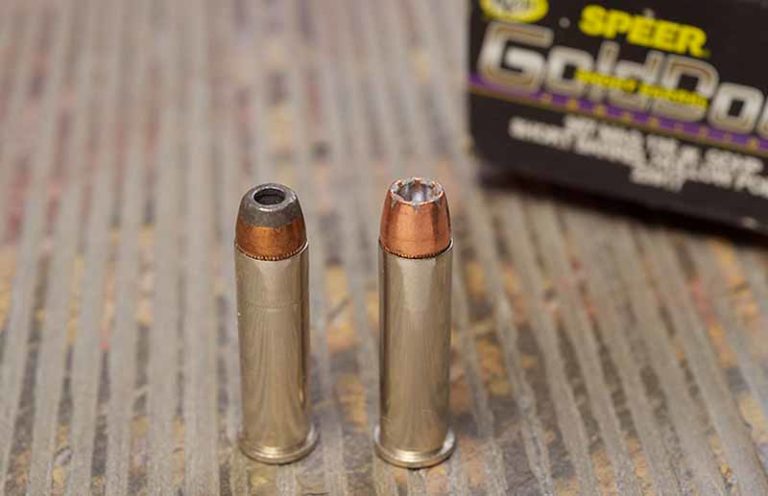
A defensive revolver needs the right defensive ammunition, here's a rundown on choosing the right load.
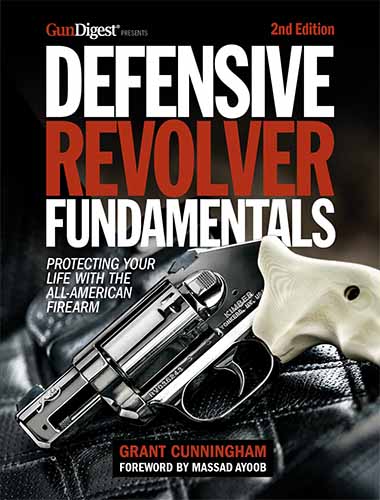
Years of shooting data have shown that the best defensive ammunition uses a hollow point bullet that expands reliably in the target and penetrates sufficiently to reach vital organs. There may be instances where that choice isn't possible, but under most circumstances, the modern hollow point is what's needed.
Since most defensive revolvers are chambered in .38 Special or .357 Magnum, it shouldn't be surprising that the majority of ammo suitable for self-defense is in these two cartridges.
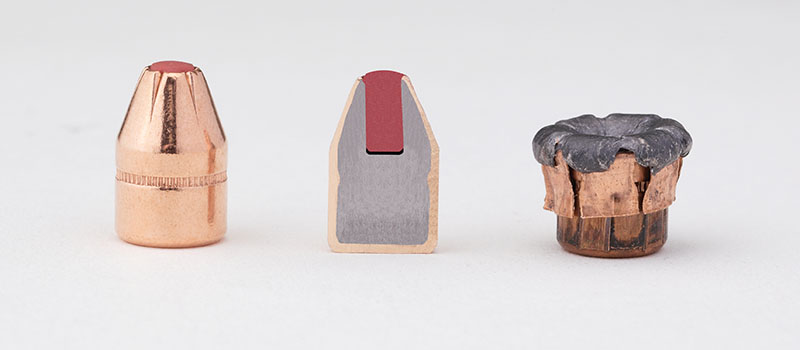
.38 Special:
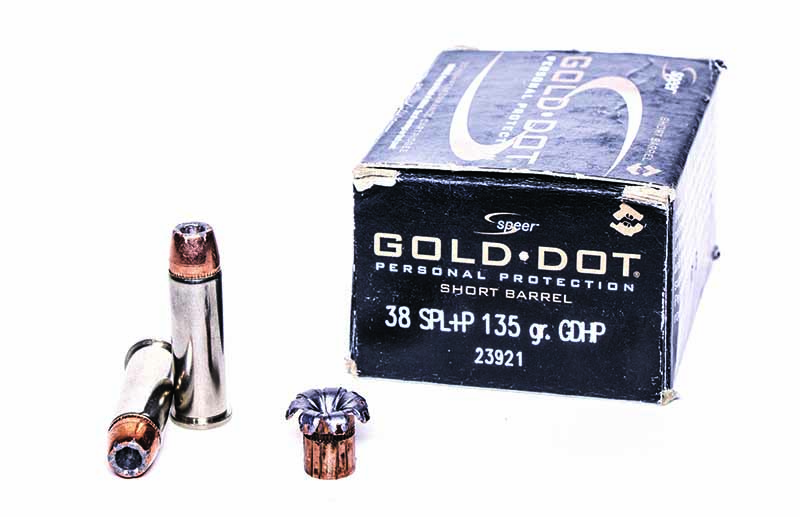
In .38 Special, the best results seem to come from the mid- to heavy-weight bullets (135 to 158 grains) in +P loadings. When I wrote the first edition, the Speer Gold Dot Hollow Point (GDHP) +P 135 grain stood out. A decade later, renamed “Gold Dot Short Barrel Personal Protection .38 Special +P,” it's still the dominant bullet in the category. Developed initially for the NYPD for backup and off-duty guns, it's racked up many shootings and has performed exceptionally well. Most modern lightweight revolvers shoot this load to the point of aim.
Also, in that first edition, Winchester had a new load called the PDX1 Defender, which was promising. Today, renamed “Defender,” it uses the same 130-grain jacketed hollowpoint bullet in a +P load and has developed a good track record in police backup guns around the country. The bullet is intelligently engineered and has been turning in good performances. I wouldn't hesitate to use it in my own guns.
Today, the new load is Federal's HST 130-grain +P, which is developing a good reputation. It's especially suitable for the new generation of short-barrel, lightweight revolvers.
An older load that has a very long track record of decent (though not outstanding) performance is the 158-grain +P lead semi-wadcutter hollowpoint (LSWCHP). This load has been offered by Winchester, Remington and Federal at various times and has the virtue of being relatively inexpensive and packaged in 50-round boxes. Based on diameter expansion in my testing, I prefer Remington, Federal and Winchester — in that order. The load generally shoots to point-of-aim in older revolvers. It wouldn't be my first choice, but it's still usable. Be aware that some people find the recoil of the heavy bullet to be painful.
.357 Magnum:
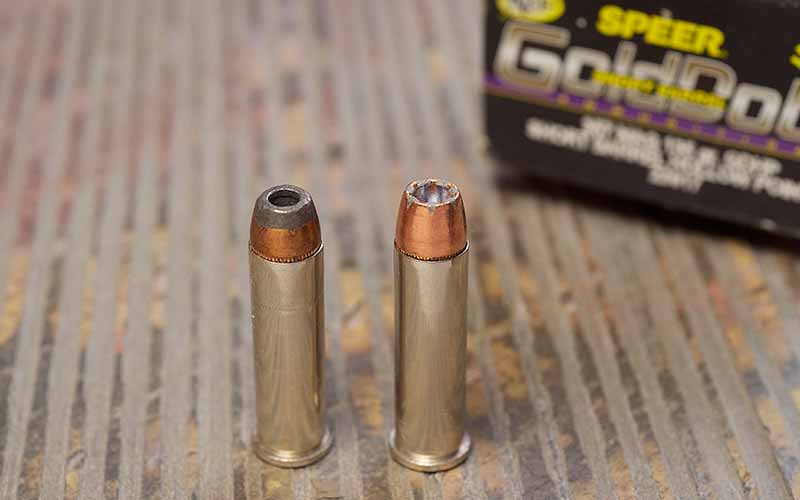
The .357 Magnum has long been ruled by the 125-grain semi-jacketed hollow point (SJHP) loads from the major ammunition makers. It's the load that defined the .357 as a “manstopper” back in the 1970s and '80s (though recent analysis of shooting data by experts such as Greg Ellifritz casts doubt on that reputation). The 125-grain load has a mixed record; when it worked, it worked very well, but it sometimes expanded far too quickly, leading to shallow and ineffective wounds.
While I don't recommend that most people carry a magnum of any type these days, primarily because of the much greater difficulty in controlling the gun in strings of fire, for those who insist, I suggest a more modern and slightly heavier bullet. Speer makes its excellent 135-grain Gold Dot GDHP in .357, and that would be my pick for its ability to maintain structural integrity in the target. Hornady also loads a 135-grain “Flexlock” bullet in its Critical Duty line, which should also perform well.
Once you move away from those calibers, the pickings get very slim.
.327 Magnum:
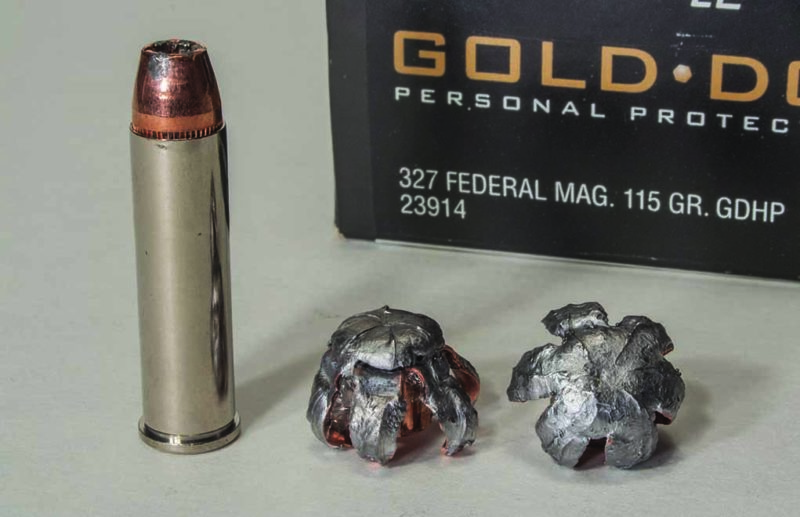
The “Baby Magnum” has issues with getting a bullet of sufficient mass to penetrate deeply enough. What's more, the caliber has fallen out of favor since I wrote the first edition, and the only defensive load on the market that I trust is the Speer Gold Dot 100-grain GDHP. To the best of my knowledge, there are still no actual defensive shootings using this load and caliber sufficiently analyzed for us to derive any solid conclusions. The recommendation is still based on seeing the results of gelatin testing.
.44 Special:
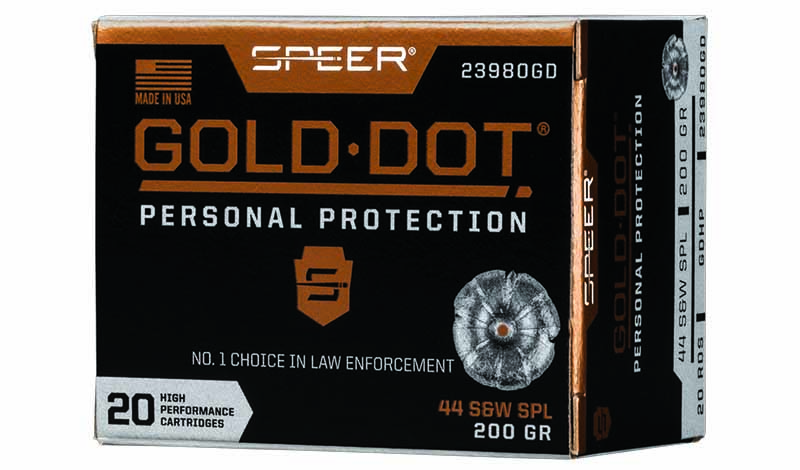
This cartridge is the very picture of an on-again, off-again round. There are times when everyone seems to rediscover this old cartridge, and ammunition suddenly becomes widely available, only to disappear as people move on to something else. I've watched this same sequence replay itself several times over the years.
The technical problem with this load is the same as faced by the .38 Special: lack of bullets that expand reliably and penetrate sufficiently. In addition, there are very few defensive shootings on record with this caliber, which further complicates matters.
Today, the .44 Special seems to be “on again,” and there are several loads worth considering. My original recommendation, based on talking with people who use the .44 Special for hunting, is still available: the 200-grain Winchester Silvertip. This round is still the top pick in a relatively narrow field, followed by the 200-grain Speer Gold Dot and the newer Hornady 165-grain Critical Defense (which is very promising, but reliable information on its performance is hard to come by).
.44 Magnum:
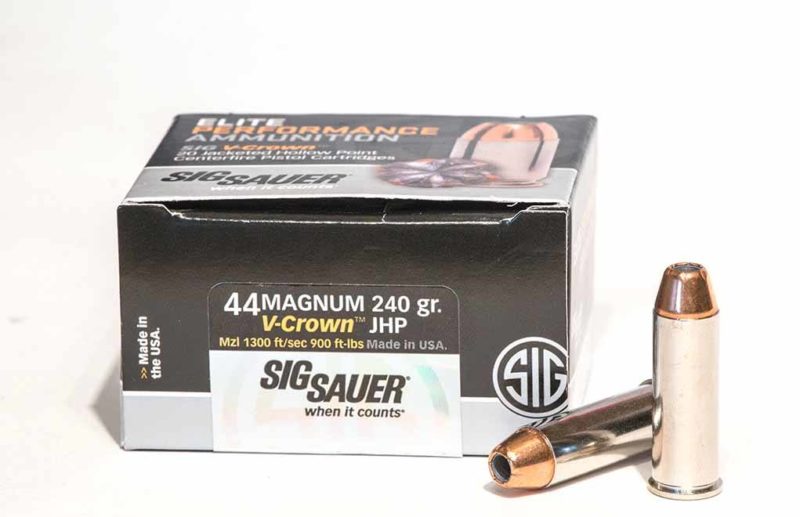
“Dirty Harry” notwithstanding, the .44 Magnum is a poor round for self-defense, being overly penetrative and challenging to control for all but the most experienced of handgunners. However, there may be circumstances where you need a revolver that can do double duty for hunting and self-defense against criminal attacks in the field and might be pressed into protective service.
The first preference would be to use one of the .44 Special rounds listed above in such cases. If those aren't available, it's preferable to pick a relatively lightweight (no more than 200 grains) hollow point to limit the round's penetration. My recommendation (and the only one that fits the criteria) is still the Hornady Custom 180-grain XTP load.
The preceding is not intended to endorse anything other than the .38 caliber revolver for self-defense. I'm of the considered opinion that when recoil and terminal effects are considered together, it is still the optimum choice for defensive shooting.
What About +P Ammo?
Remember that hollow points expend some of their energy expanding in diameter, but that energy can't be used to drive the same bullet forward. There is no such thing as a free lunch; if you want the bullet to expand, it will use energy. If there is too little of it to start with, there won't be enough left to carry the bullet on its path.
In those cases, the expanded bullet will stop forward movement too soon, which results in very shallow wounds that don't reach vital organs. As such, you don't find many expanding bullets in standard .38 Special cartridges — there just isn't enough energy to drive a bullet deeply into the target and expand it simultaneously.
The answer is to start with more energy, enough to expand the bullet and penetrate sufficiently. This task is often accomplished with “+P” ammunition, simply a cartridge loaded beyond “normal” pressure. The +P loading boosts the cartridge's energy to accomplish a specific task.
A common misunderstanding of +P loadings is that they're useless since they don't increase power considerably. Here's the thing: they don't need a lot more, just enough to change the performance envelope.
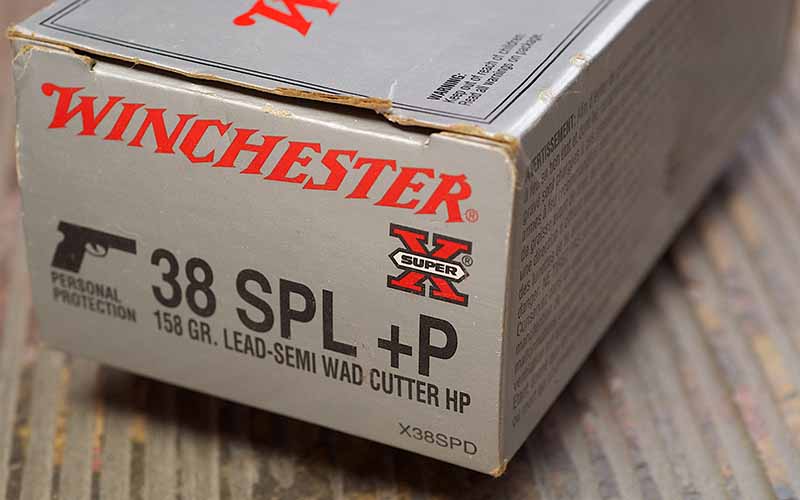
The idea behind the +P load is to add enough energy to reliably deliver an expanded bullet deeply enough to do its job. If a normal-pressure load can't quite deliver that bullet to where it needs to, but a slightly hotter +P version does, then that is sufficient for the task at hand.
It's important to understand that you don't need vast increases in power for defensive applications; you simply need enough power to perform the twin tasks of reaching vital parts and destroying them. Some will argue that it's better to have a more significant reserve of energy on tap than a +P, but everything comes at a price. In the chapters on technique, we'll delve into that concept more.
Ammunition For The Recoil Sensitive
Many people, particularly those with ultra-light revolvers, find that the recoil of .38 Special +P ammunition is too much to comfortably handle. Sadly, there aren't a lot of alternatives; the Special, in standard-velocity loadings, isn't well known as a fight-ending cartridge.
Many “low-recoil” loads are now available in .38 Special, but they all combine a very lightweight projective clad in a tough jacket that generally doesn't expand at .38 Special velocities.
The only choice I can recommend for the recoil sensitive is the old 148-grain wadcutter target load. It actually has some good traits: the flat-nose profile cuts a full-sized channel through the target and retains enough energy to penetrate adequately. The downside of the profile is that it's harder to reload quickly. Some will argue against its use, but it performs better than any round-nosed or fully jacketed bullet in the caliber from what I've seen. It would not be my first choice, except for those cases where +P ammunition is not an option.
What About .22 LR And .22 WMR?
There is no shortage of snobbishness in the defensive shooting world. For instance, most defensive shooting trainers look down on revolvers, and nearly everyone disparages the so-called “pipsqueak” calibers — the .22 Long Rifle and .22 Magnum.
The .22 calibers, more commonly found in rifles than in handguns, are the most prolifically produced ammunition on the planet. It's estimated that some 2 to 2.5 billion rounds of .22 LR alone are made every year.
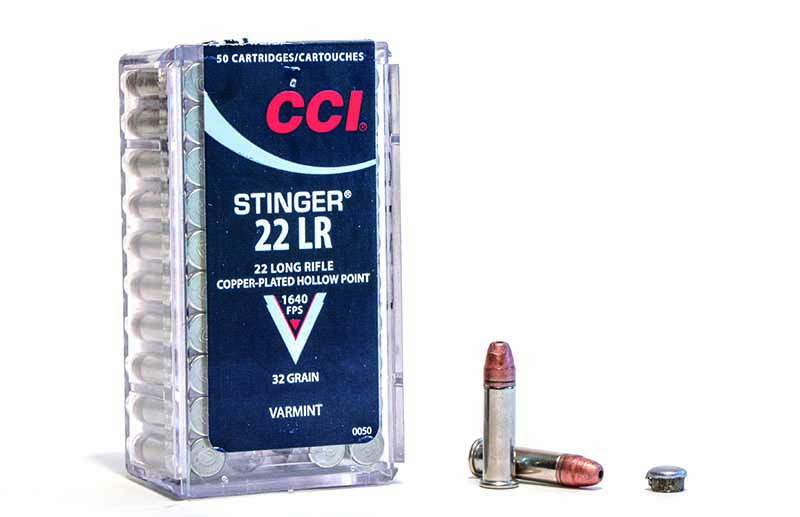
Given their ubiquity, it's a sure bet that some of them get pressed into use against attackers. And they do. While precise data is sketchy, they are often (though not always) effective in that role.
But should the .22 be considered a viable defensive choice?
First, the good news: a .22, even the Magnum version, will have minimal recoil fired from a revolver. It's much easier to make accurate rapid-fire hits with it than any other caliber (and, it must be said, they're an awful lot of fun on the range). For someone who is genuinely recoil-averse, that's a significant benefit.
The bad news: except in rare instances, the .22 simply isn't as immediately effective as a larger caliber bullet. No matter how adroitly fans of the .22 cartridges try to argue their point, it isn't and never will be.
However, in self-defense, doing something is usually better than doing nothing. And a .22 revolver, even though it doesn't have the reputation of its larger-caliber cousins, is a better tool than empty hands and loud words. While I wouldn't necessarily recommend any .22 revolver as an unqualified first choice, in some instances, it may be the best alternative — if the other choice is to be unarmed.

If you or someone you know is considering a .22 for personal protection, there are a few caveats you should heed. First, most .22 handguns are single-action revolvers; these are never good for self-defense. Their light single-action triggers are a liability in shaky hands, and they're challenging to fire rapidly, which is necessary for the small .22-caliber. Not only that, but they require practice and attention to detail to de-cock safely, should a shot not be fired. If you're considering a .22, stick to the few double-action models available.
Second, choose the heavier bullets in the cartridges. For the .22 Long Rifle, that would be the 40-grain projectiles. In the .22 Magnum, the 45-grain bullets are preferred. Expansion of these smaller rounds will not be significant (and may even reduce necessary penetration), so solid bullets are preferable.
Practice with these rounds should focus on delivering many shots in one volley accurately to the most vulnerable part of the target to maximize the potential of the tiny bullets. That should be achievable by even the most recoil-shy.
Editor's Note: This article is an excerpt of Defensive Revolver Fundamentals, 2nd Edition.
More Defensive Revolver Info:
- .357 Magnum Revolver: Controllable Concealed Carry Options
- 9 Best Concealed Carry Revolvers For Personal Defense
- Fighting Revolver Project: Smith & Wesson Model 586
- Rolling With A .45 ACP Revolver
- .410 Revolvers: Are They Really Good For Nothin’?
- Best 9mm Revolver: 5 Options For Everyday Carry

Next Step: Get your FREE Printable Target Pack
Enhance your shooting precision with our 62 MOA Targets, perfect for rifles and handguns. Crafted in collaboration with Storm Tactical for accuracy and versatility.
Subscribe to the Gun Digest email newsletter and get your downloadable target pack sent straight to your inbox. Stay updated with the latest firearms info in the industry.

![Best Concealed Carry Guns In 2025 [Field Tested] Wilson Combat EDC X9S 1](https://gundigest.com/wp-content/uploads/Wilson-Combat-EDC-X9S-1-324x160.jpg)


![Best 9mm Carbine: Affordable PCCs [Tested] Ruger Carbine Shooting](https://gundigest.com/wp-content/uploads/Ruger-Carbine-Shooting-100x70.jpg)
![Best AR-15: Top Options Available Today [Field Tested] Harrington and Richardson PSA XM177E2 feature](https://gundigest.com/wp-content/uploads/Harrington-and-Richardson-PSA-XM177E2-feature-100x70.jpg)

For home defense, I prefer 410 3in buckshot. I don’t have to worry about overpenetration, and in my Judge, that’s 25 .38 caliber balls without having to reload.
Winchester’s Train & Defend .38 Special is low-recoil, low-flash, and consistently penetrates at least 12″ with good expansion.